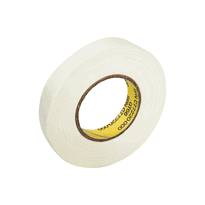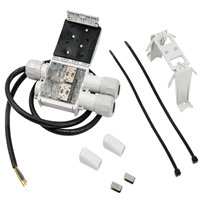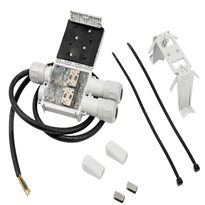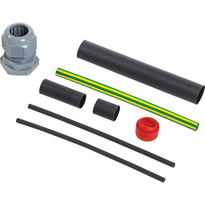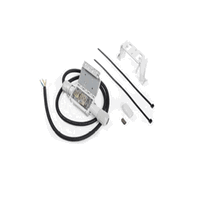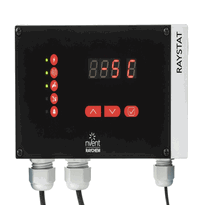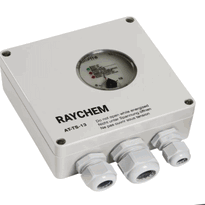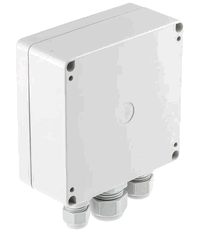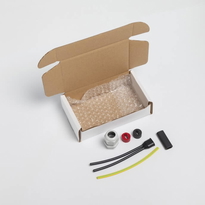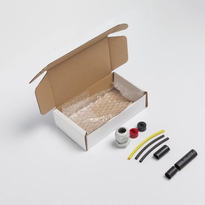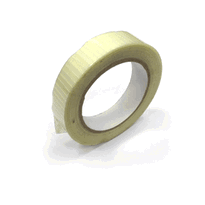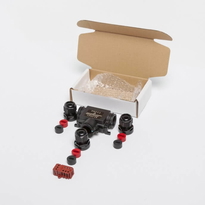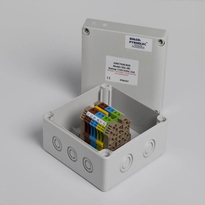Heat Tape for Garden Hose
When using heat tape to protect garden hoses during cold weather, it is important to select a suitable type that matches the material of the hose and the outdoor conditions. Silicone rubber tapes, which can withstand temperatures up to 230°C, are ideal for most garden hoses. Fiberglass tapes, with a maximum temperature exceeding 480°C, may be used in more extreme environments but are generally not necessary for typical UK conditions.
Proper installation is essential to ensure safety and effectiveness. Begin by thoroughly cleaning the hose to remove dirt and debris. Measure the length of the hose carefully to determine the appropriate length of heat tape needed. When applying the tape, do so without overlaps or crossings, ensuring a smooth, even coverage. Secure the tape firmly with electrical tape, taking care not to restrict water flow or damage the hose.
Connect the heat tape only to properly grounded GFCI (Ground Fault Circuit Interrupter) outlets, which provide additional protection against electrical faults. Regular visual inspections are recommended to check for any signs of damage, wear, or water ingress, especially after severe weather events. Ensuring the tape’s water resistance and secure attachment will help maintain frost protection throughout the winter season.
For optimal safety and performance, follow manufacturer instructions closely and consider consulting local electrical regulations concerning outdoor wiring and appliance use. Proper maintenance and vigilant monitoring will help keep your garden hose protected from freezing temperatures, ensuring it remains in good condition for the seasons ahead.
Selecting the Right Heat Tape for Garden Hoses
When choosing the appropriate heat tape for garden hoses, it's important to consider several technical factors to ensure both effective and safe operation.
Firstly, check that the tape’s maximum temperature rating matches the hose material and intended use. For example, silicone rubber tapes typically reach up to 230°C, while fibre-glass insulated tapes can withstand temperatures of 480°C or more.
Next, consider the material compatibility. The heat tape should be suitable for rubber or plastic hoses without causing any damage or deterioration. This helps maintain the integrity of the hoses over time.
Water resistance and chemical resilience are also vital, especially for outdoor applications exposed to varying weather conditions. The heat tape should resist moisture and chemicals to prevent degradation and ensure longevity.
It is equally important to verify that the voltage and power ratings of the heat tape are compatible with your available power supply. Proper matching helps improve performance and reduces the risk of electrical faults.
Additionally, selecting a heat tape with self-regulating capabilities can provide more energy-efficient and safer operation by automatically adjusting heat output according to ambient conditions.
Experience has shown that vapor barriers can be effective in managing moisture and preventing water damage, so choosing a heat tape with moisture resistance features is beneficial in outdoor settings.
Finally, always check for relevant safety certifications. Certified products are tested for electrical safety, reducing the risks associated with electrical hazards and ensuring you operate the heat tape securely.
Careful consideration of these factors will help you select the most suitable heat tape, providing reliable protection for your garden hoses during cold weather while maintaining safety standards.
Proper Installation Techniques for Garden Hose Heat Tape
Proper installation of garden hose heat tape requires careful preparation and adherence to specific procedures to ensure safety, efficiency, and effective heating.
Initially, the hose surface must be thoroughly cleaned, removing dirt, moisture, and residues to optimise contact and heat transfer. Inspect the hose for damage or leaks; heat tape should never be applied over compromised sections. Cleaning the hose thoroughly helps prevent insulation and heat tape from trapping debris, which could lead to mold or damage over time. Accurate measurement of the hose ensures selecting the correct length of heat tape, preventing waste and ensuring uniform heating.
It’s important to position the hose where it's most exposed to cold weather, typically along the lower or windward side. When applying the heat tape, start near the power outlet and follow the manufacturer’s instructions for either spiralling or straight application.
Secure the tape with electrical tape every 15 to 20 centimeters to maintain proper contact. Avoid overlaps or crossings of the tape, as these can create fire hazards and compromise performance.
Carefully follow all safety guidelines provided by the manufacturer, and ensure the installation complies with local electrical regulations to guarantee safe and efficient operation throughout the cold season. Additionally, selecting the appropriate insurance for outdoor installations can offer further protection and peace of mind during harsh weather conditions.
Safety Tips and Best Practices for Using Heat Tape Outdoors
Using heat tape outdoors requires strict adherence to safety protocols and best practices to minimize the risk of electrical hazards, fires, and equipment damage. Regular inspection is essential to ensure the tape remains in good condition. It should be unplugged before checking for cracks, charred insulation, or exposed wires, and any damaged sections must be replaced immediately. During installation, heat tape must wrap directly on the pipe or hose without crossing or overlapping. Electrical connections should only be made to GFCI (Ground Fault Circuit Interrupter) outlets to prevent shocks. Extension cords are unsafe for this purpose; heat tape should connect directly to weather-protected outlets to minimize risk. Always verify that the heat tape’s material compatibility and installation follow the manufacturer’s instructions to ensure safe and effective operation, especially during cold weather when protection is most critical. Proper grounding of electrical systems is essential to reduce the risk of shocks and electrical fires. Using a high-quality 3-ply class jointing tape can help secure insulation and connections, reducing exposure to moisture and damage. Proper handling and careful maintenance will help prevent accidents and prolong the lifespan of your outdoor heating equipment.
Conclusion
Choosing the right heat tape, following proper installation procedures, and observing safety guidelines are crucial for effectively protecting garden hoses during cold weather. Correctly installed heat tape reduces the risk of damage and ensures dependable operation, while consistent adherence to safety practices helps prevent electrical hazards. Users should carefully read the manufacturer’s instructions, carry out regular inspections, and keep workspaces clear of obstructions. By implementing these recommendations, you can ensure that outdoor hoses are safely and reliably protected from frost, keeping them functional and long-lasting throughout the winter months.








